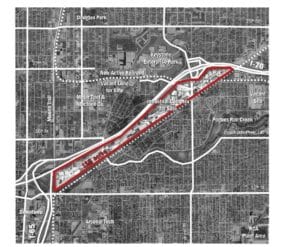Indianapolis, IN
Indianapolis, IN:
Revitalizing urban manufacturing sites as job centers
The City of Indianapolis has a long history as a manufacturing center. The city, with its interstate and rail connections has been home to many large industrial manufacturers. However, as has occurred in many other Midwestern cities, manufacturing has sharply declined in Indianapolis. The result of this decline has left many vacant industrial sites throughout the city.
The easy dream for vacant industrial sites has always been to create a “mixed-use village”, but what about creating jobs? Currently, there are future trends and ongoing studies that offer opportunities towards developing new industries and new employment areas. The Indianapolis Daniel Rose Fellowship Team proposes to focus on strategies to revitalize urban manufacturing sites. The Indianapolis Team, through the use of information generated from ongoing studies, will focus specifically on the Mass. Ave. / Brookside Industrial Corridor just northeast of downtown Indianapolis.
The Mass. Ave. / Brookside Industrial Corridor is composed of +300 acres that features a mix of vacant and occupied industrial, commercial, and residential buildings. The corridor has terrific access to Interstate 70 and a CSX railroad corridor; however there is deteriorating infrastructure and environmental issues. The corridor is also nearby the popular mixed-use Mass. Ave. corridor and rising residential neighborhoods such as Cottage Homes and Woodruff Place.
This program should help identify and inform the city on the following topics: needed research, existing industry retention tools, public involvement, emerging industries, creative precedents, infrastructure needs, adaptive reuse techniques, industrial placemaking techniques, land use regulation changes, industrial development policies, workforce training, assets to leverage, environmental issues, economic incentives, funding sources, etc. The program should further look at how this corridor merges, connects to, and serves the surrounding neighborhoods and parks.
The strategy created for this industrial corridor will serve as an example of a workable and modern revitalization approach that could be applied to other vacant industrial areas throughout the city. This effort will hopefully result in direct job growth for the city on blighted industrial sites within depressed neighborhoods. This job growth will ultimately improve the quality of life within these neighborhoods as well as improve the overall health of the entire city.
View a PDF of the study visit panel’s presentation
